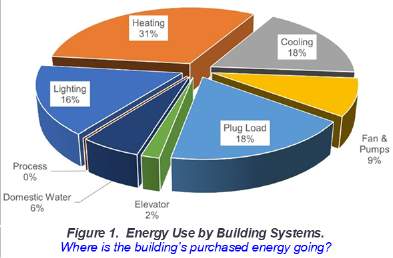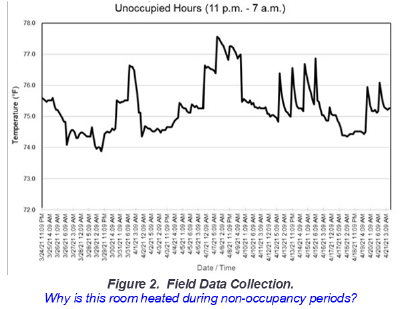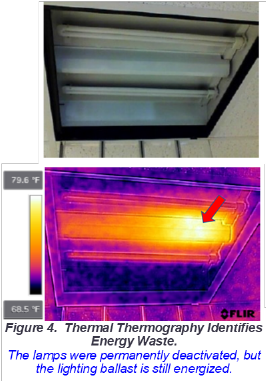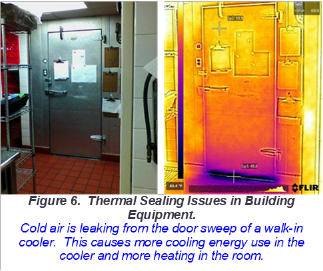Energy Auditing
February 2, 2022 Newsroom
A building energy audit is a process of determining how a facility uses energy, the types of energy used, the energy cost, and identifying opportunities to reduce consumption without decreasing occupants’ thermal comfort or life safety. New York City (NYC) Local Law 87 (Energy Audits and Retro-Commissioning) mandates periodic energy audits for buildings that exceed 50,000 square feet. The New York State Energy Research & Development Authority (NYSERDA) and local utility companies require an energy audit as a requirement for participation in some of their utility incentive programs. And NYC Local Law 97 (Carbon Emission Limits), scheduled to be implemented in 2024, will require some level of energy auditing to determine a property owner’s actual carbon emission and potential financial penalties.
Types of Building Energy Audits
An energy audit is often also referred to as an energy assessment, survey, evaluation, or investigation. There are four commonly accepted types:
- Level-0 (Benchmarking Audit or ASHRAE Preliminary Energy-Use Analysis):

This audit is an analysis of energy use and cost to determine a benchmark index such as Btu (British Thermal Unit) per square foot per year. It involves analyzing annual utility bills and is relatively quick for simple building layouts. NYC Local Law 84 (Energy Benchmarking) requires annual benchmarking submissions for buildings exceeding 10,000 sq. ft.
- Level-1 (Walk-Through or ASHRAE Level-1):
This audit involves a cursory Level-0 analysis and quick identification of recommended energy improvement measures that are no-cost or low-cost. On-site surveying is limited to a few hours with a small team of auditors, and the survey cost is small. Estimated energy savings and implementation costs are rough estimates. A Level-1 audit is ideal to determine if a building has potential energy reduction and cost savings. If a building does not, the auditing effort is ended with no further resources expanded. If a building has potential, a higher auditing effort is necessary to quantify that potential.
- Level-2 (Energy Survey and Analysis or ASHRAE Level-2):

This audit involves a more detailed utility data analysis and surveying of building conditions and energy consuming equipment. The surveying effort depends on the size and complexity of the facility, and it may last multiple days or weeks with a large team or multiple teams of auditors. This effort is also dependent on the complexity of recommended energy measures. Auditors can perform more detailed energy calculations, take on-site measurements, and collaborate with contractors and specialized consultants to provide more realistic savings and implementation costs. Building owners can use the results to plan their energy projects and use the report to comply with NYC Local Law 87 requirements.
- Level-3 (Detailed Analysis of Capital-Intensive Modifications or ASHRAE Level-3):
This audit expands upon the Level-2 effort. Typically, building owners will decide which recommended energy measures they wish to pursue from the Level-2 audit. Auditors will refine engineering and economic analysis, backed by detailed field data collection, and develop a preliminary scope-of-work or design. Implementation costs result from actual contractor bids. As a result, these audits are also referred to as investment grade audits or IGAs.
Energy Auditor Qualifications
An energy audit team will typically consist of personnel with different engineering and energy-related expertise. The team composition may vary with the audit level and energy measures being analyzed. Regardless of efforts, energy auditors or team leaders should be certified energy audit professionals. NYC Local Law 87 requires an energy audit to be conducted or supervised by personnel with one of the following certifications:
- Certified Energy Manager (CEM) or Certified Energy Auditor (CEA)
- High Performance Building Design Professional (HPBD)
- Building Energy Assessment Professional (BEAP)
- Multifamily Building Analyst (MFBA) – audits of multifamily residential buildings only
Energy Audit Results
The results of an energy audit should help building owners understand how they are using energy, how their energy consuming equipment contribute to energy use, the cost of energy use, and ways to reduce that energy use. The audit could also produce recommendations for operations and maintenance improvements. At a minimum, NYC Local Law 87 requires a Level-2 audit to provide:
- Reasonable recommendations to reduce energy use and/or building operation cost

- Annual energy savings, implementation costs, and simple financial payback
- Benchmarking results
- A breakdown of energy use by system and predicted energy savings by system
- A general assessment of how the major energy consuming equipment and systems impact energy consumption
Water Conservation
Although an energy audit investigates the use of electrical and fossil fuel energy in heating and cooling systems, it will often include a survey of domestic water use within a building. At a minimum, water must be conditioned or pumped to the point-of-use. Reducing water consumption can result in significant cost savings due to high use and water and sewer costs.
Building Owner and Stakeholder Involvement
A successful energy audit is a team effort consisting of the audit team, building owner, operators, and other stakeholders such as tenants. Building owners should convey their expectations of the audits, and provide guidance on their priorities, constraints, and other factors that could help focus auditing efforts or influence energy measure considerations. This helps reduce auditing cost and optimize efforts.
Do I Need an Audit?
Collado Engineering can help you determine what type of audit is right for you and/or what you need to comply with New York City requirements. Our certified energy professionals can provide detailed analysis and recommend realistic energy conservation measures.